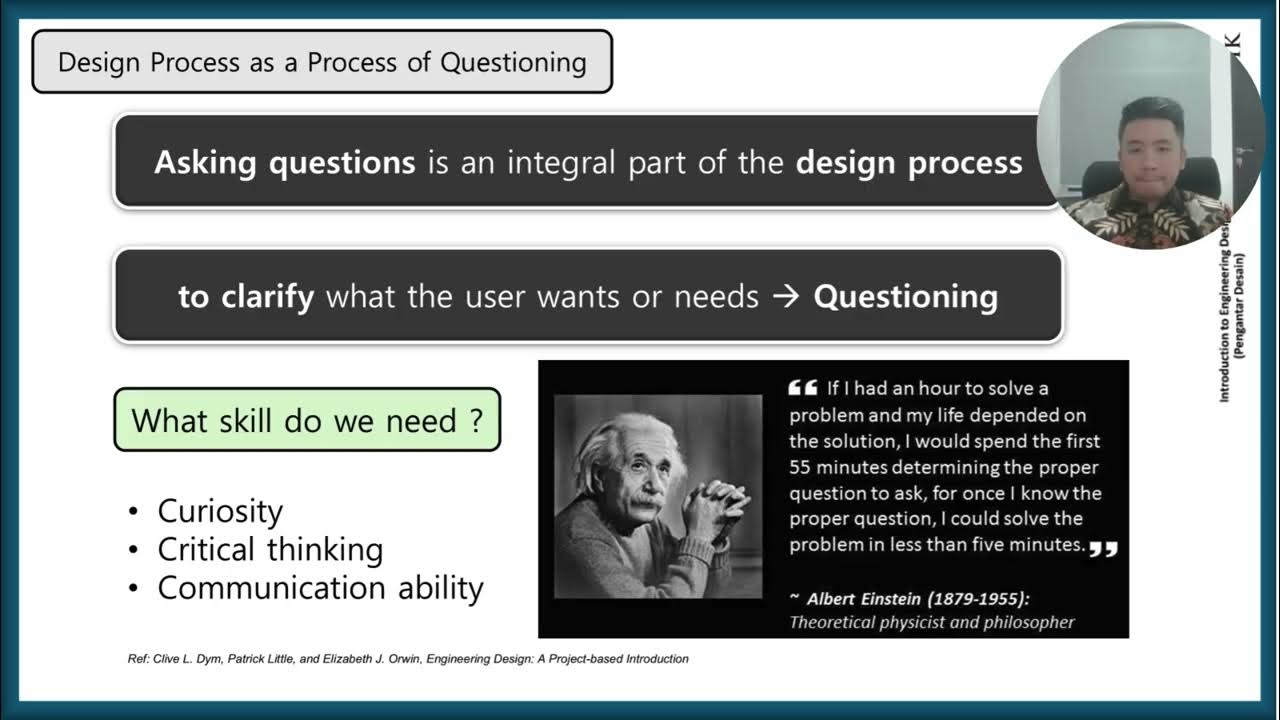Contoh Aplikasi Design Thinking di Industri Healthcare | CIAS QuickFix with Dr. Indrawan Nugroho
Summary
TLDRThis video highlights a powerful example of Design Thinking applied in healthcare, where Dog Diets from General Electric redesigned the MRI experience for children. Faced with children’s fear of the MRI machine, which led to longer scan times and higher costs, Diets and his team used a human-centered approach to transform the procedure into a fun, adventure-like experience. This simple yet innovative solution reduced the need for anesthesia, increased patient throughput, improved satisfaction, and boosted hospital efficiency and MRI machine sales—all without requiring technological changes. It’s a remarkable example of empathy-driven innovation in healthcare.
Takeaways
- 😀 Design thinking was applied to solve a healthcare problem involving children's fear of MRI machines.
- 😀 The initial challenge was that children were terrified of entering the MRI machine, which led to longer scan times and the use of anesthesia.
- 😀 The designer, Dog Diets, realized that solving the problem required a human-centric approach, focusing on the children rather than the hospital's operational costs.
- 😀 Through observation and consulting with child development specialists, the team discovered that children wanted to feel normal and healthy, despite being sick.
- 😀 The solution was to make the MRI experience feel like a fun adventure, helping to calm the children and make them more cooperative during scans.
- 😀 The MRI machine was redesigned with creative themes, such as pirate ships and spaceships, to make the experience engaging for kids.
- 😀 Staff were provided with scripts and soundtracks to create an immersive adventure experience for the children during the scan.
- 😀 As a result, the children were entertained and able to remain still during the scan, which decreased the need for anesthesia and shortened scan times.
- 😀 The hospital's operational efficiency improved, with more scans completed per day and fewer children requiring anesthesia.
- 😀 Patient satisfaction scores significantly increased, with children even requesting to return for future scans, calling it 'playing'.
- 😀 The design solution had a low investment cost but led to substantial benefits, including reduced operational costs, improved hospital ROI, and increased MRI machine sales.
Q & A
What was the main issue that the healthcare designer, Dog Diets, observed with MRI machines in hospitals?
-The main issue observed was that children were terrified of MRI machines, which made the scanning process more difficult, prolonged, and costly due to the need for anesthesia or longer operational times.
How did Dog Diets approach the problem of children's fear of MRI machines?
-Dog Diets used a human-centered design thinking approach, focusing on understanding the children's emotional needs. He reframed the problem to make the MRI experience feel more like a fun and engaging adventure.
What specific observation led to the development of the solution?
-Dog Diets observed that children who were sick still wanted to feel normal and healthy. This led to the realization that making the MRI experience playful and less intimidating would help children feel more at ease.
What innovative solution did Dog Diets and his team develop?
-They created an adventure-themed MRI experience, where the MRI machine was decorated like a pirate ship or spaceship, and staff guided children through the process like a fun, interactive game.
What was the impact of transforming the MRI experience into an adventure for children?
-The new approach significantly reduced the need for anesthesia, increased the number of scans per day, improved patient satisfaction (with satisfaction scores reaching 90%), and made the hospital’s investment in MRI machines more profitable.
Did the solution involve any technological changes to the MRI machine?
-No, the solution did not require any technological changes to the MRI machine. It was a creative, low-cost solution focused on altering the experience surrounding the procedure.
What was the role of design thinking in solving this problem?
-Design thinking played a crucial role by helping the team shift from a hospital-focused perspective to a human-centered one, focusing on the emotional needs of the child rather than just operational efficiency or cost reduction.
How did this approach affect the hospital’s operational efficiency?
-The approach improved operational efficiency by reducing the need for anesthesia, which lowered costs and allowed for more MRI scans to be conducted each day, enhancing the hospital's overall productivity.
What role did empathy and observation play in the design process?
-Empathy and observation were key in understanding the children's fear and emotional needs. By spending time observing children in daycare settings and consulting child development specialists, the team was able to better address the children's perspectives and create a solution that resonated with them.
How did the solution impact the sales of MRI machines?
-The innovative approach not only improved the patient experience but also contributed to increased sales of MRI machines, as hospitals saw the value in the solution’s impact on patient care and operational costs.
Outlines

This section is available to paid users only. Please upgrade to access this part.
Upgrade NowMindmap

This section is available to paid users only. Please upgrade to access this part.
Upgrade NowKeywords

This section is available to paid users only. Please upgrade to access this part.
Upgrade NowHighlights

This section is available to paid users only. Please upgrade to access this part.
Upgrade NowTranscripts

This section is available to paid users only. Please upgrade to access this part.
Upgrade Now5.0 / 5 (0 votes)





